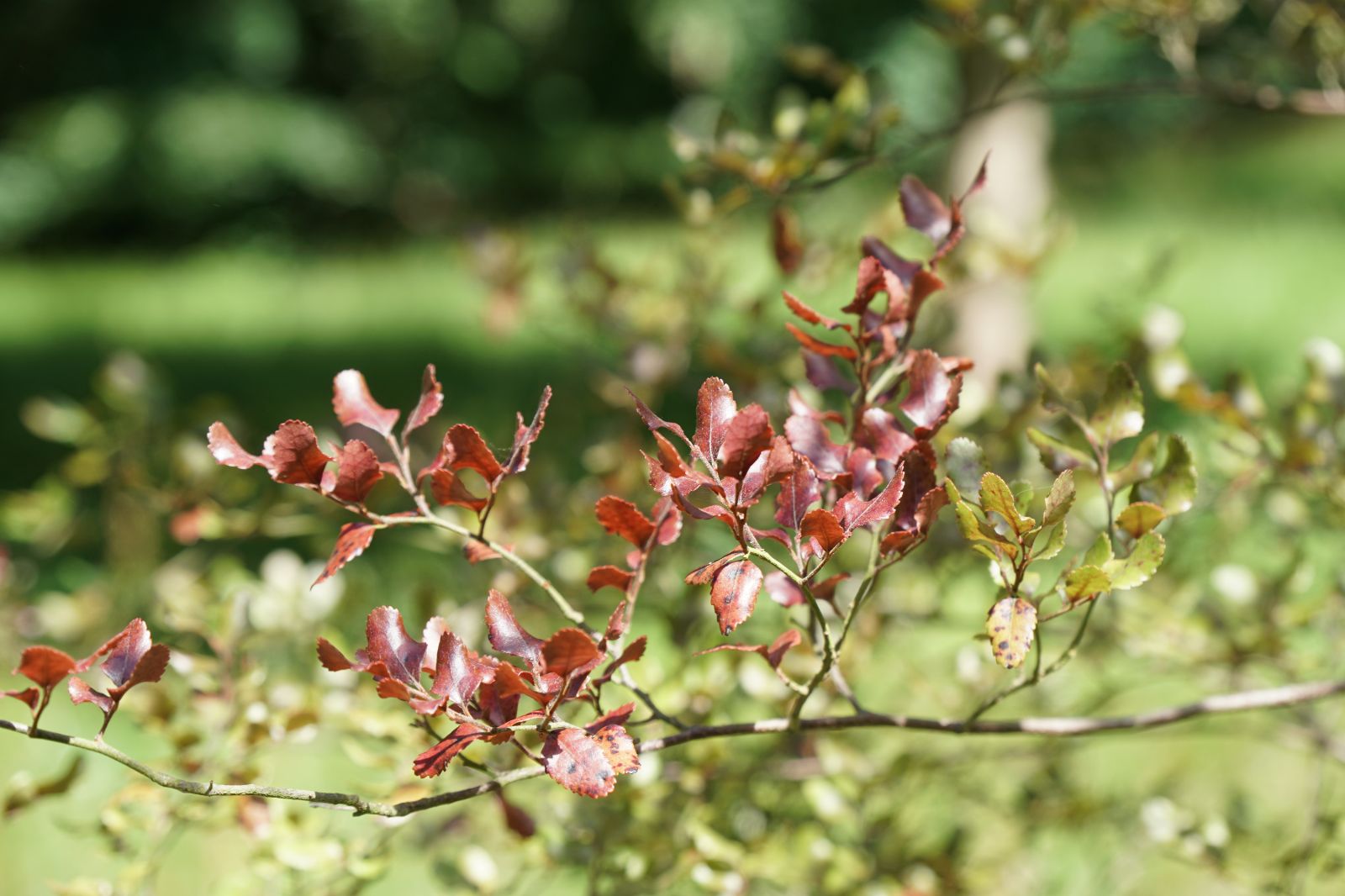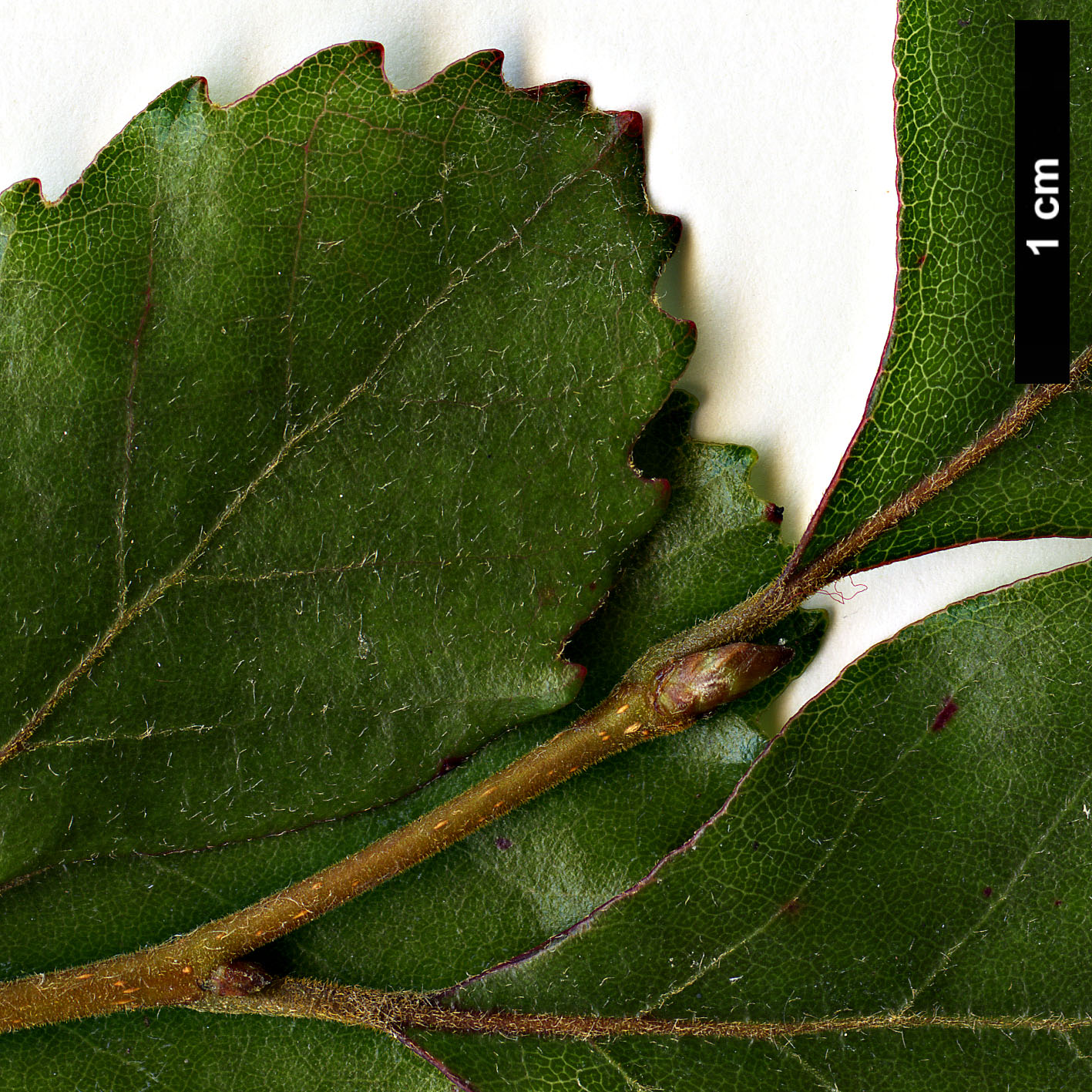Nothofagus truncata
Sponsor
Kindly sponsored by
Col. Giles Crisp
Credits
Owen Johnson (2020)
Recommended citation
Johnson, O. (2020), 'Nothofagus truncata' from the website Trees and Shrubs Online (treesandshrubsonline.
Genus
Common Names
- Hard Beech
- Tawhai Raunui
Synonyms
- Fuscospora truncata (Colenso) Heenan & Smissen
- Nothofagus fusca var. colensoi (Hook. f.) Cheeseman
- Fagus truncata Colenso
- Fagus fusca var. colensoi Hook. f.
Other taxa in genus
- Nothofagus alessandrii
- Nothofagus alpina
- Nothofagus antarctica
- Nothofagus betuloides
- Nothofagus × blairii
- Nothofagus cliffortioides
- Nothofagus cunninghamii
- Nothofagus × dodecaphleps
- Nothofagus dombeyi
- Nothofagus fusca
- Nothofagus glauca
- Nothofagus gunnii
- Nothofagus × leonii
- Nothofagus macrocarpa
- Nothofagus menziesii
- Nothofagus menziesii × obliqua
- Nothofagus moorei
- Nothofagus nitida
- Nothofagus obliqua
- Nothofagus pumilio
- Nothofagus solandri
Tree to 36 m tall, with an often straight trunk to 2 m thick. Bark grey, smooth then quite quickly developing vertical ridges and fissures. Shoots slender (c. 1 mm thick), red-brown, zig-zagging, minutely downy. Buds conic, reddish, c. 4 mm long. Leaves semi-evergreen (falling after c. 12 months), leathery in texture, rather pale green, broadly ovate to roundish or rather triangular, broadly cuneate at the base, 20–35 × 15–20 mm, glabrous except for ciliate margins; domatia absent; veins in 5–6 distinct pairs, each tipped with a finely rounded tooth, and usually with one smaller tooth between each vein-tip. Leaves flush pinkish and turn rich red before falling. Petiole downy, 4 mm long. Male flowers sub-sessile; female flower with stigma only shallowly grooved. Cupule 12 mm long, 4-lobed, with entire lamellae, containing 3 winged nutlets 8 mm long. (Nothofagus 2007–2008; Bean 1976; Poole 1949).
Distribution New Zealand In scattered populations across the North Island and in the South Island south to Greymouth, with one isolated population much further south at Mount Aspiring.
Habitat Low to medium-altitude forests, often near rivers (but to 900 m in the subtropical north, where it is confined to high ground), rarely forming almost pure stands on sandstone in Taranaki. Often growing alongside Nothofagus fusca and especially N. solandri, and in mixed forests.
USDA Hardiness Zone 8
RHS Hardiness Rating H4
Conservation status Least concern (LC)
Although it is not assessed as threatened (Baldwin, Barstow & Rivers 2018), Nothofagus truncata has the most restricted and most northerly wild distribution of the five New Zealand species, and was much the last to be introduced to Europe. It closely resembles N. fusca in overall appearance and in European literature is perhaps likeliest to be encountered under the name N. fusca var. colensoi, as in the World Checklist of Fagales (Govaerts & Frodin 1999). However, the more numerous, shallower and more rounded teeth and the two or so extra pairs of lateral veins on the leaves of N. truncata provide consistent distinguishing features between the two taxa, as do the presence of domatia (hairy pits) under the leaves of N. fusca. Genetic research by R. D. Smissen and other (Smissen et al. 2014) has suggested that the two species do interbreed in the wild, but that hybrids are quite rare, and that the species themselves ‘are no more closely related to each other than they are to either of the entire-leaved species’ (N. cliffortioides and N. solandri). The scientific name is slightly misleading, as the bottom of the leaf is nearly always broadly cuneate, just as in N. fusca, rather than truncate. The vernacular name Hard Beech derives from the high silica content in the timber, which blunts a saw quickly (Wikipedia 2020).
The first introduction to Europe seems not to have been until 1992, when a tree with the collector’s number WODA 1181 was added to the National Collection at Wakehurst Place (Tree Register 2020). This has not survived, but another planted in the same year by Malcolm Frazer in the Bute Park Arboretum in Cardiff, and assumed to have come from the same source, was a 2 m bush in 2005 (Tree Register 2020); this remarkable municipal tree collection is situated on a deep alluvial soil with a higher pH than Nothofagus in general are supposed to tolerate. By contrast, in the wetter climate and the acidic soils of Tregrehan in Cornwall the older of two tree planted by Tom Hudson, in 1998, had grown to 12 m × 15 cm dbh after 16 years (Tree Register 2020). The species’ northerly and lowland distribution implies that some summer warmth is needed for good growth (Nothofagus 2007–2008), and that it may be slightly less hardy than the other New Zealand Nothofagus; so far, the evidence suggests that it will prove less adaptable and reliable in cultivation than the lookalike N. fusca and is likely to remain a collector’s tree.
A young planting in the rather dry climate of Peasmarsh Place in East Sussex, received via Dan Luscombe at the National Pinetum at Bedgebury, is believed to represent the natural hybrid between N. fusca and N. truncata. It was 3 m tall and growing strongly on heavy clay in 2018 (Tree Register 2020).





